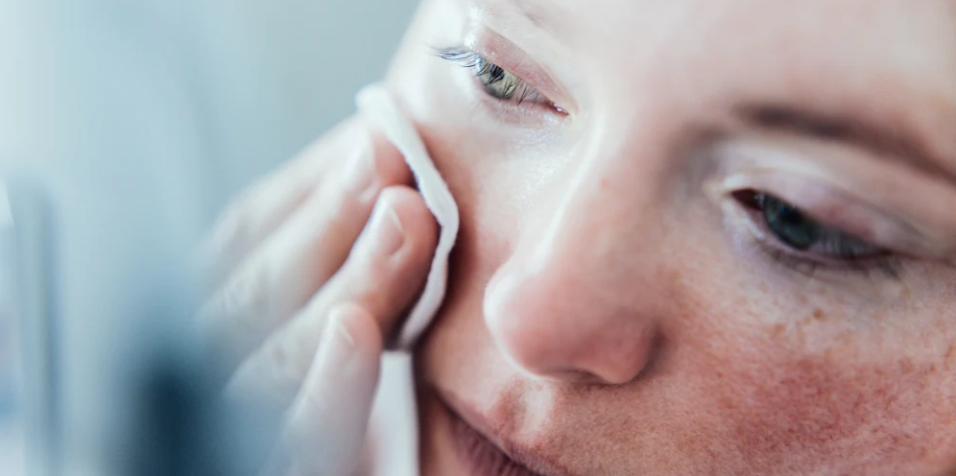Read Full Article HereRosy red cheeks are adorable on babies, and a little blush can help accentuate cheekbones. But facial redness can be frustrating when you have too much of it in the wrong places or it simply won’t go away.
Various skin disorders can cause facial redness. And the American Academy of Dermatologists lists several causes, including pimples, eczema, rosacea, dermatitis, allergies, swollen veins — and even more serious conditions like cancer. Fortunately, less serious causes are more common, but it’s a good idea to get a medical expert’s opinion when your face seems redder than it should be.
To help you tame your specific type of redness, we’ll go through the leading causes, how to avoid facial redness, and the skin care products to turn to when it does happen. Ready for calm and clear skin? Keep scrolling or use the links below.
Why is my face red?
Your face could be red for many reasons. The list below, while lengthy, is not exhaustive:
Emotions: Some people get red in the face when they are embarrassed, pleased or angry.
Hot flashes: Commonly seen in those experiencing menopause , hot flashes are a sudden feeling of warmth that floods your face and upper body.
Acne: Commonly known as pimples, this condition refers to when your skin breaks out into painful red bumps, or blemishes like blackheads and whiteheads.
Eczema: Also known as atopic dermatitis, this condition involves very dry skin prone to redness, itching and scaling.
Rosacea: “Rosacea is a condition that leads to redness and often pimples on the face,” says Dr. Angela J. Lamb , a board-certified dermatologist in New York City. It’s commonly mistaken for acne.
Dermatitis: This is a blanket term for any irritation or inflammation of your skin. For instance, “[contact dermatitis] is when your skin has an allergic reaction to something you’ve applied topically,” says Dr. Howard Sobel, a New York City-based dermatologist. Irritants include certain perfumes, preservatives or metals.
Psoriasis: Your skin makes new cells too fast when you have this condition, creating a blotchy, reddish look.
Over-exfoliation: Scrubbing your skin too hard can irritate and redden it. “This is getting to be very common as at-home peels are gaining in popularity. While at-home peels are safe and effective, if you over-exfoliate, you do compromise and weaken your skin barrier, which inflames the skin,” Sobel says.
Vigorous physical activity: A rigorous workout gets your heart working hard and may cause your face to flush.
Sun and wind damage: The sun can damage your skin, causing sunburn, spider veins, blisters or even skin cancer.
Allergies: Exposure to allergens can irritate your skin, causing swelling and redness.
Toxins and chemicals: Exposure to pesticides, cleaning agents, petrochemicals and other dangerous chemicals can make your face red.
Other skin conditions: Germs that infect the skin, including bacteria, fungi and parasites like scabies, can make your skin red.
Other health conditions: Your skin is your largest organ, so health conditions like lupus , Kawasaki’s Disease and cancers can redden your skin.
How do you reduce redness on your face?
Once you know why your skin is red, fixing it is a lot easier. Consider the following tips to jumpstart the process:
Pare down your product routine
If you think your red skin is due to a product allergy or over-exfoliating, it’s time to simplify your product routine.
“I usually recommend eliminating all nonessential products in these cases, including makeup to reduce allergen exposure. Once you allow the skin to calm down, then reintroduce products one by one over a period of days to allow for the culprit to identify itself. A visit to a dermatologist or allergist that does patch testing is helpful in causes related to allergies,” says Vega.
Seek out soothing ingredients
When it comes to skin care, it’s what’s inside that matters most. “Ingredients in skin care products, such as niacinamide, allantoin, and aloe vera may help calm skin and reduce redness,” Dr. Brendan Camp, board certified dermatologist of MDCS Dermatology, says.
Bank also recommends the following soothing ingredients: sulfur, caffeine, licorice root, chamomile and cucumber.
Struggling with Facial Redness? Discover Expert Tips to Soothe Your Skin
October 22, 2024









